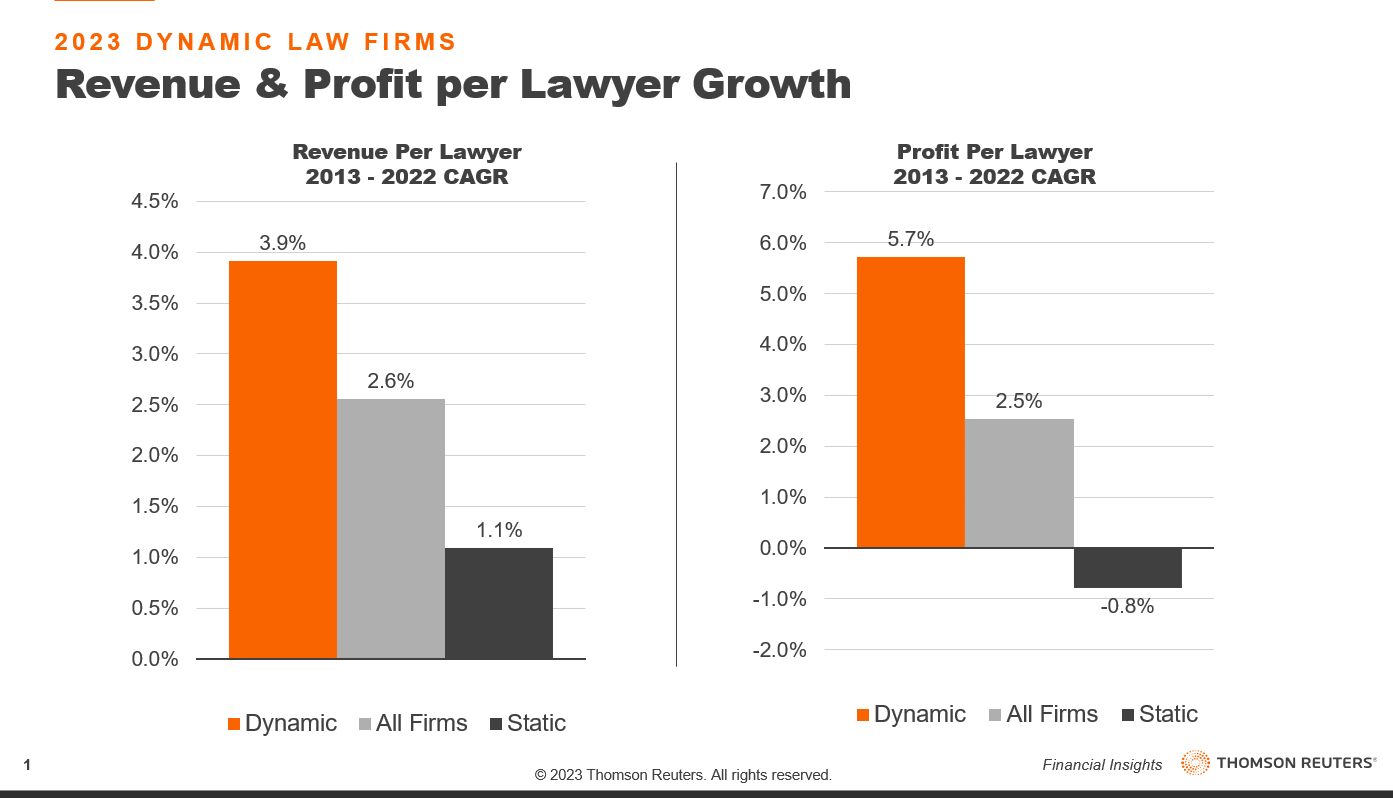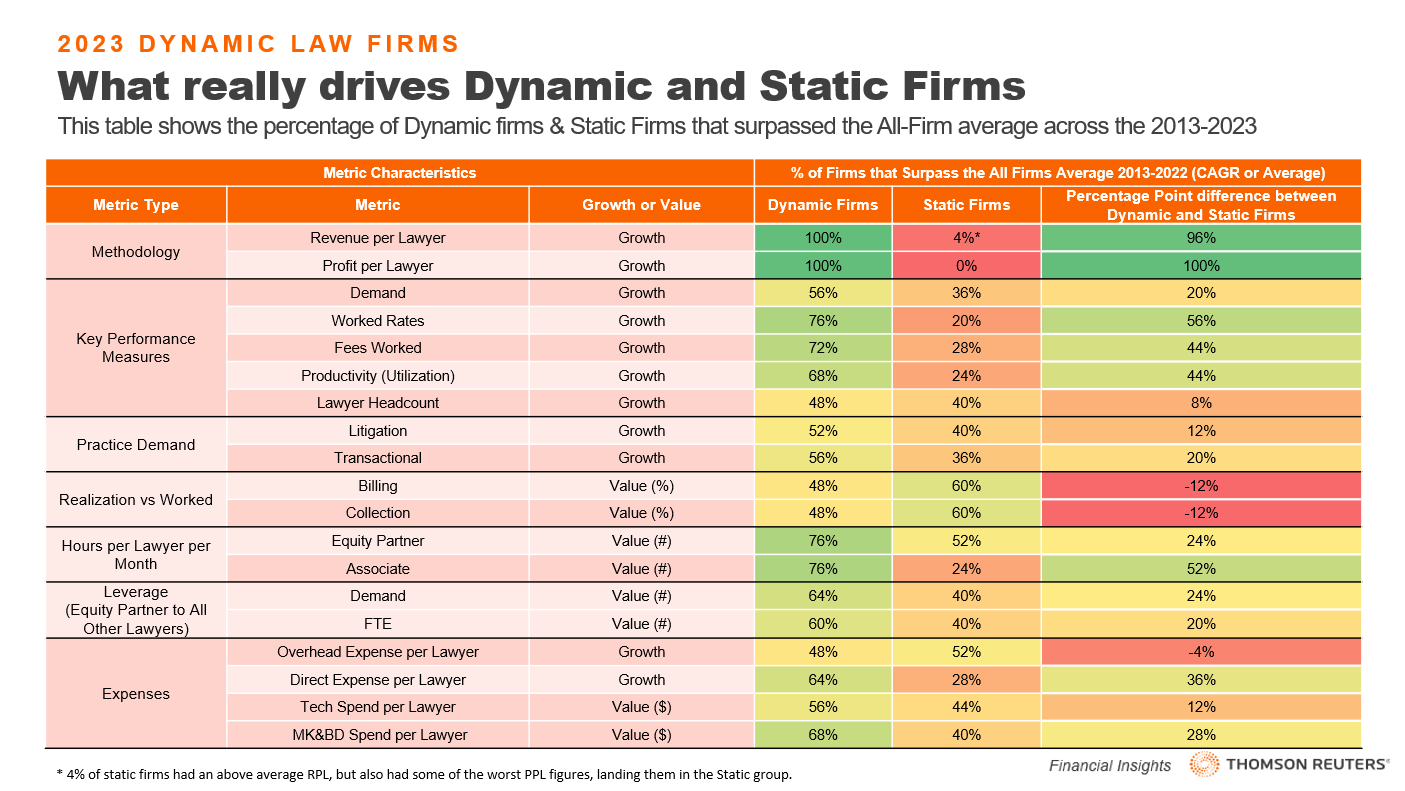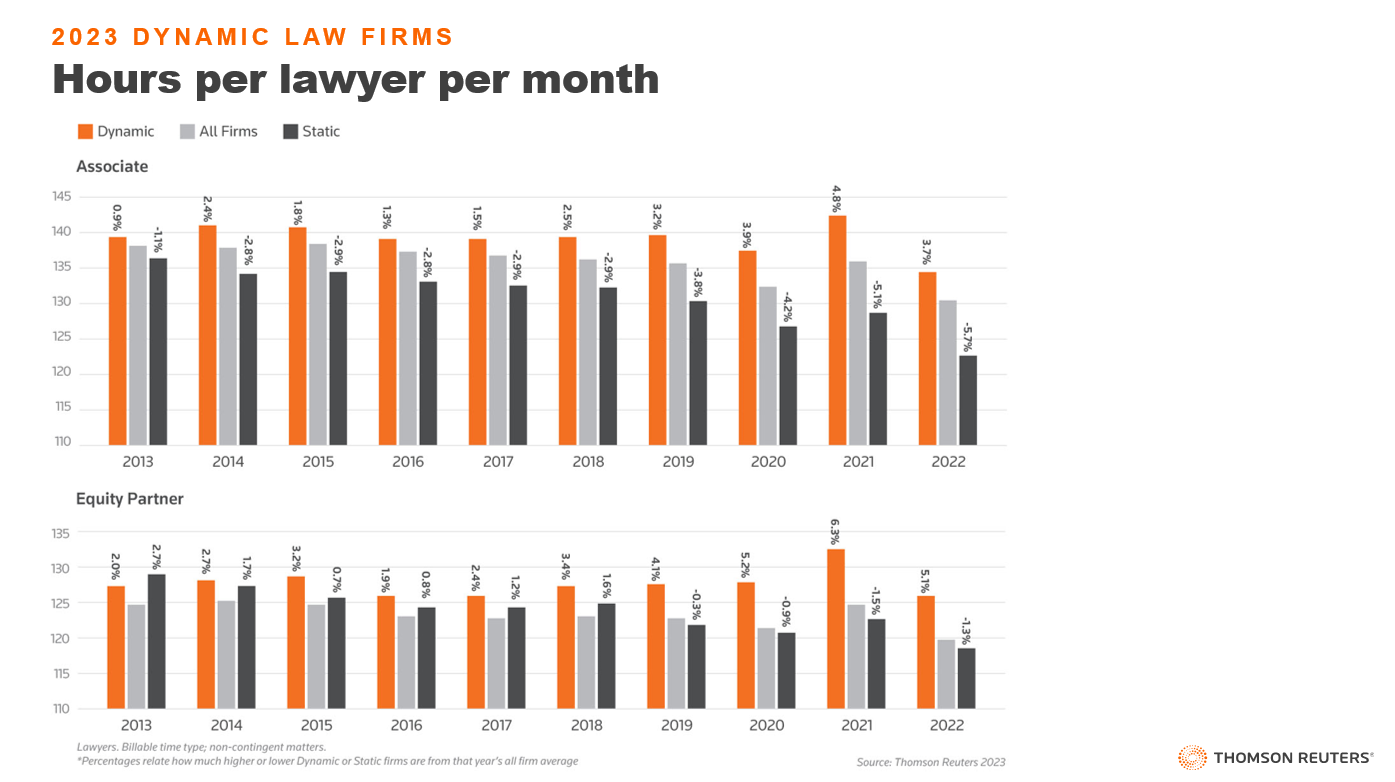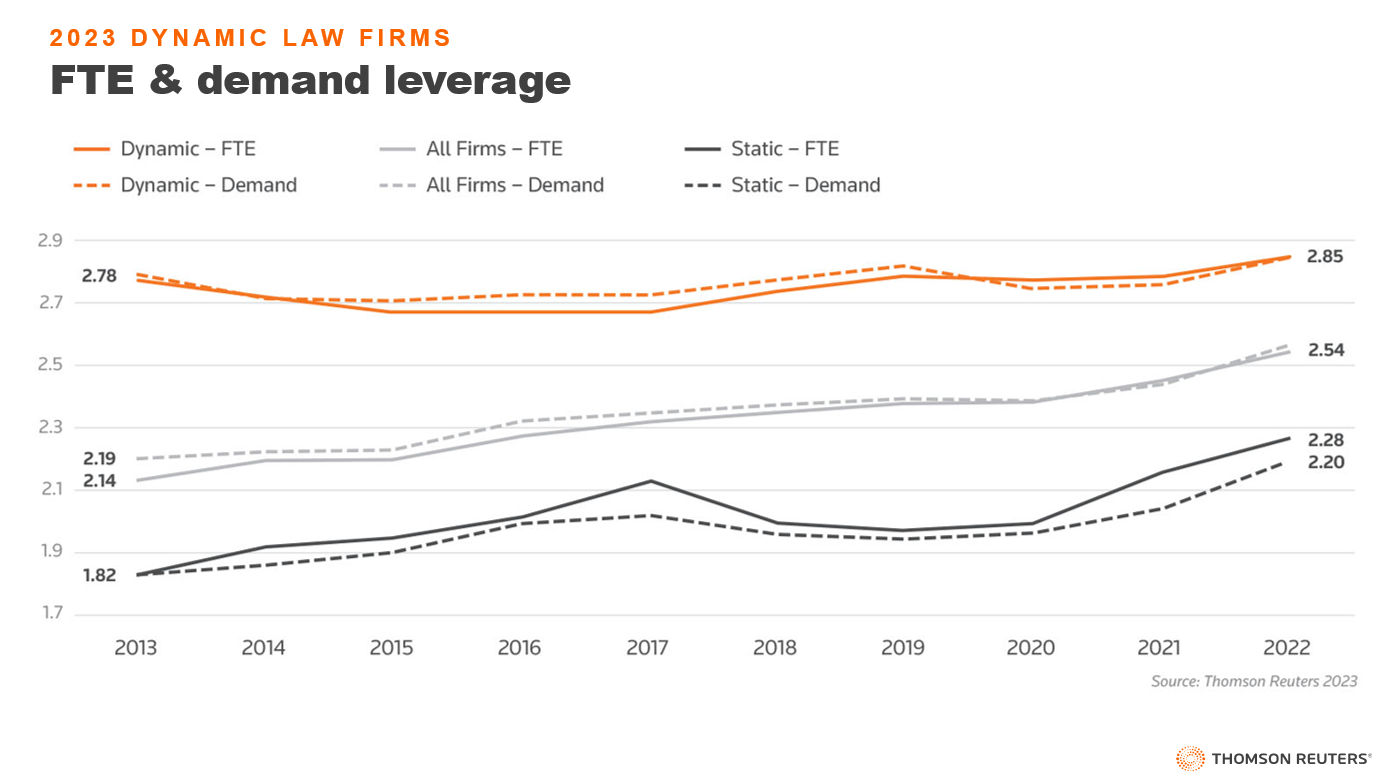While high-growth Dynamic law firms tend to lead all financial metrics, some of those metrics matter far more than others
Recently, the Thomson Reuters Institute recognized a group of law firms that consistently outperform their peers in financial metrics, categorizing them as Dynamic law firms. Key findings from the report are based on the 10-year performance of Dynamic firms (top 25%) and Static firms (bottom 25%), based on the revenue per lawyer (RPL) and profit per lawyer (PPL) performance over that time period.

Despite Dynamic firms’ dominance in virtually every metric represented in the report, understanding which metrics contribute most substantially to growth can be an intricate task. It is, therefore, essential to delve deeper into the underlying data that informed the report’s conclusions to comprehend what truly distinguishes these two groups.
The graphic below offers a comprehensive perspective of the distribution that underlies the averages of nearly every single metric covered in the report. It presents the percentage of both Dynamic and Static firms which outperformed the all-firms average over the decade.
At the top of the table, you see that 100% of Dynamic firms achieved a compound annual growth (CAGR) over the decade that was superior to the average law firm in our two core factors (RPL and PPL). It shouldn’t be much of a surprise since these metrics were the basis for our methodology. By comparing the Dynamic firms’ percentage to the Statics percentage (far right column), you can start to see which metrics really separate Dynamic and Static firms.

Starting with our key performance measures, you can most clearly see where our obsession with aggressive rate strategies begins and why the RULES of Profitability (Rates, Utilization, Leverage, Expenses, and Speed) — outlined by David H. Maister in his book, Managing the Professional Services Firm (Free Press, 1997) — starts with rates. Nearly 76% of Dynamic firms saw an above-average worked rate increase over the last 10 years, compared to only 20% of Static firms.
This significant 56-percentage point disparity is the largest in the report, establishing rate increases as a crucial determinant of a firm’s Dynamic nature. However, this advantage does come with issues itself. As their rate growth lagged, above-average realization values tended to favor Static firms. And considering that nearly half of Dynamic firms still had above-average realization speaks to how their aggressive stance on rate increases hasn’t incurred quite the bite back from clients that one might expect.
The table also illustrates the second greatest difference (44 percentage points) between the segments in two key performance metrics — productivity (utilization) and fees worked (a proxy for revenue). Utilization, (our second RULES component) which roughly considers the manpower costs involved in gaining billable hours or revenue, is an influential metric that is vital to the profitability picture.
Within utilization, some lawyer titles are more important than others — and you can see which titles tended to separate our firm groupings on that same table. The net percentage point difference between the segments for hours per lawyer per month for associates sat at 52 (second-highest value aside from rates and methodology), while equity partners were at only 24. This can be instructive for two reasons.
First, 76% of Dynamic firms had above-average utilization for both titles, but it’s the Static firms’ underperformance in associate productivity where we find the real difference, as shown in the figure below. This leads into the second reason: associate’s salaries are effectively a fixed cost, and every hour they bring in after their salary is satisfied goes into the partners’ profit pool.

While equity partners’ fees are much higher in total and per hour, partner revenue will inherently be returned at a distribution pool. In other words, partners eat everything they hunt; while associates, on the other hand, ideally provide more to the pool than their cost. This means that the margin gain from associates’ hours is where partners truly benefit, as it serves something closer to passive income.
This ties nicely with the RULES’ L or leverage (which also has a net difference of 20-plus percentage points in favor of Dynamic firms), and where we see a very revealing development among Static firms. The leverage and the utilization differences suggest that Static firms may be over-incentivizing partners’ output rather than encouraging partners to support and prioritize drumming up business until their associates are fully booked, even at the loss of a portion of partners’ own billable hours.

It is clear that having strong performance in rates, utilization (especially for associates), and leverage appear to be non-negotiables factors in becoming a Dynamic law firm. It is one thing to say that these are necessary metrics in which firms need to succeed, however, the real challenge is implementing the vision and infrastructure to accomplish them.
In a subsequent article, we will explore the E or expenses and the S for speed (of billing) parts of the RULES rubric to see how a firm’s strategic direction and execution with expenses need to work in concert to accomplish their already established rates, productivity, and leverage goals.
You can download a copy of the Thomson Reuters Institute’s Dynamic Law Firms Report 2023 here.







